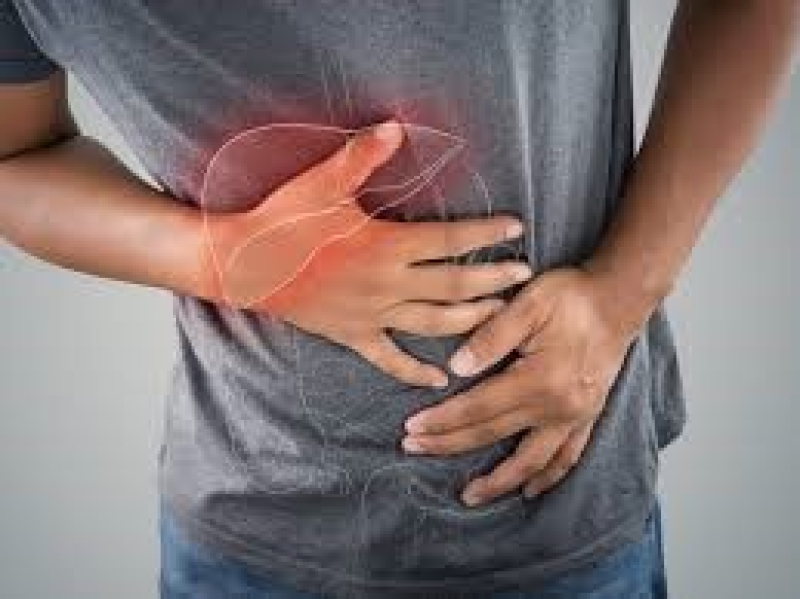- Muslim League leads new electoral alliance, Jatiya Muslim Jote |
- Tk 500cr Drive to Turn Haor Fallow Land Into Farmland |
- Tarique Rahman returns home amid rapturous reception |
- Home After 17 Years: Tarique Returns to Gulshan Residence |
- Tarique Calls for United Effort to Build a Safe Bangladesh |
Liver diseases: Challenges and solutions

Lifestyle factors play a crucial role in the rise of liver diseases.
Liver disease stands as a formidable challenge to public health in contemporary society. According to the World Health Organization (WHO), liver diseases now rank as one of the leading causes of mortality, with projections indicating that they may climb to become the fifth leading cause by 2030. The pervasive nature of liver diseases has transformed them into an epidemic, impacting lives and placing strain on healthcare systems across our country and the globe.
In this article, let's shed light on the factors driving this surge, the obstacles we face and potential solutions that can aid us in addressing this growing public health concern.
India is currently experiencing an upswing in liver diseases mirroring patterns. Recent data underscores the severity of this situation. Non-alcoholic fatty liver disease (NAFLD) has emerged as a worry in India and has a prevalence of about 9 per cent to 32 per cent in the general population in India. Moreover, viral hepatitis remains a threat with an estimated 40 million individuals living with hepatitis B and around 6-12 million grappling with hepatitis C.
There are various types of liver diseases, with the most common being:
1. Viral Hepatitis: Viral hepatitis comprises five distinct types: A, B, C, D, and E. Each type is caused by a different virus. Hepatitis A and E are typically transmitted through contaminated food or water, while hepatitis B, C, and D spread through contact with blood or other bodily fluids.
2. Alcohol-Related Liver Disease: Excessive alcohol consumption causes this condition. Alcohol can harm the liver in multiple ways, including inflammation, scarring, and the development of cancer.
3. Non-Alcoholic Fatty Liver Disease (NAFLD): NAFLD occurs when surplus fat accumulates in the liver. It is the most prevalent liver disease globally and is often linked to obesity, lack of physical activity, and diabetes.
4. Autoimmune Hepatitis: This autoimmune disorder targets the liver and is more prevalent in women. Treatment typically involves immunosuppressive medications.
5. Primary Sclerosing Cholangitis: This is a chronic inflammatory ailment affecting the bile ducts, which carry bile from the liver to the intestine. Primary Sclerosing cholangitis can lead to bile duct scarring and blockage, ultimately damaging the liver.
Lifestyle factors play a crucial role in the rise of liver diseases. Urbanisation, changing dietary patterns, and sedentary behaviours contribute to the escalating rates of NAFLD. Indian diets, traditionally rich in vegetables and grains, are shifting towards increased consumption of processed foods, high in sugars and unhealthy fats.
Furthermore, the prevalence of alcohol-related liver diseases in India is a significant concern. Alcohol consumption, often deeply rooted in cultural practices, poses a substantial risk, especially in a country with a high burden of poverty and limited access to education about the dangers of excessive drinking.
In India, access to healthcare remains a critical challenge in the fight against liver diseases. While major cities have advanced medical facilities, rural areas often lack the infrastructure and specialised professionals needed for effective liver disease management. This urban-rural divide exacerbates health disparities and leads to delayed diagnoses and suboptimal care.
The cost of liver disease treatment, including medications and transplantation, can be a substantial barrier for many Indians, particularly those from marginalised communities. Government-supported initiatives and affordable treatment options are crucial to ensuring that no one is left without proper care.
Addressing the surge of liver diseases in India requires a targeted approach:
1. Awareness Campaigns: Public awareness campaigns tailored to the Indian context are essential. These campaigns should emphasise the risks of unhealthy diets, and excessive alcohol consumption, and the importance of early detection through regular health check-ups.
2. Community Education: Engaging with local communities to spread awareness about the dangers of excessive alcohol consumption and the benefits of healthy lifestyles can have a lasting impact.
3. Telemedicine: Given the vast geographical landscape of India, telemedicine can bridge the gap in healthcare access, enabling consultations with hepatologists and gastroenterologists even in remote areas.
4. Government Support: The government should invest in healthcare infrastructure and specialists for rural areas. Affordable treatment options and financial support for underprivileged patients can make a significant difference.
5. Research and Collaboration: Encouraging research on liver diseases prevalent in the Indian population can lead to tailored treatment strategies. Collaboration between healthcare institutions and government bodies is essential for effective implementation.
The escalating prevalence of liver diseases in India necessitates attention. Lifestyle factors, healthcare accessibility and the burden posed by hepatitis all contribute to this mounting crisis. By placing an emphasis on education, taking measures, and ensuring access to healthcare services, we can take adequate and effective steps in fighting liver diseases in India. It is crucial that the healthcare system in India, policymakers, and communities join forces to give importance to liver health and strive towards a future for everyone.

